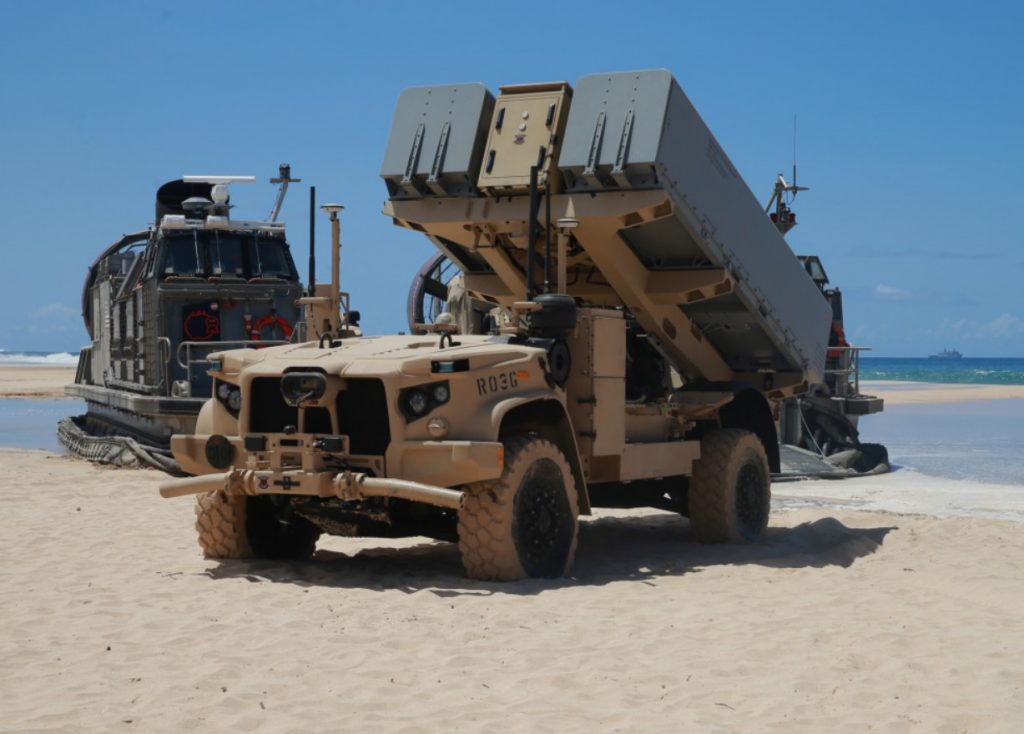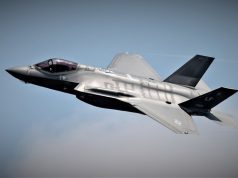
The US Navy and Marine Corps have successfully tested their new NMESIS land-based anti-ship system, hitting a decommissioned vessel off the coast of Hawaii during Large Scale Exercise 21.
The Navy Marine Expeditionary Ship Interdiction System (NMESIS) Ground-Based Anti-Ship Missile (GBASM) capability is designed to provide anti-ship fires from land as part of an integrated naval anti-surface warfare campaign. The solution consists of an unmanned JLTV-based mobile launch platform, called the remotely operated ground unit for expeditionary fires (ROGUE-Fires), and the NSM.
The NSM is the same missile used by the navy for the over the horizon weapon system deployed on littoral combat ships.
NMESIS completed its first test launch in November 2019 and another one likely in November last year.
On August 15, the system was part of the sinking exercise (SINKEX), which provided a testing environment for new and developing technologies to connect, locate, identify, target and destroy adversary threats in all domains, culminating in the live-fire demonstration of the naval strike missile against a sea-based target.
The decommissioned target ship was the Ex-Ingraham, the last Oliver Hazard Perry-class frigate to be built. The ship entered service in 1989, and retired in 2015.
During the SINKEX, forward-deployed forces on expeditionary advanced bases detected and, after joint command and control collaboration with other US forces, responded to a ship-based adversary. Simultaneous impacts from multiple, dispersed weapons systems and platforms across different US services—including NMESIS—engaged the threat.
“From an acquisition perspective, NMESIS started a little over two years ago,” said Joe McPherson, long range fires program manager at MCSC. “We’ve been able to rapidly move [on developing and fielding this system] because we’re leveraging existing NSM and JLTV subsystems.”
Because NMESIS is not yet a fielded capability, engineers from MCSC managed the fire control piece of the system during the exercise. Marines, however, were able to practice maneuvering the system and validating the system’s interoperability with their Naval and Air Force partners.

“This week was very successful,” said McPherson. “In addition to the two live fire shots that hit the target, we also successfully deployed the system aboard the Marine Corps’ primary transport systems, the C130 and LCAC.”
Though not associated with its program development, the NMESIS transportability and mobility demonstration serves an important role in developing tactics, techniques and procedures related to this critical capability, said McPherson.
MCSC is developing and fielding new anti-surface warfare weapons capabilities, including NMESIS, on pace to support Force Design 2030 objectives. These new capabilities contribute to the fleet’s ability to achieve sea control, sea denial and defense against adversary amphibious force missions.

“This exercise gave us an opportunity to not only measure, but also validate the concepts for [the Marine Corps’] anti-ship capability, which is one of the most important avenues of the Commandant’s Force Design 2030,” said Lieutenant Col. Ryan Collins, combat integration office for artillery and fires at Marine Corps Combat Development Directorate, Combat Development and Integration. “I think the successful launches of the missile will help us clarify the path forward as we move to fulfill the Commandant’s 2030 vision, and giving the Marine Corps a transformative anti-ship capability.”
Exercise LSE 21, during which the NMESIS was tested, was a live, virtual and constructive scenario-driven, globally-integrated exercise with activities spanning 17 time zones. LSE 2021 spanned multiple fleets, and aimed to refine synchronized maritime operations based on a progression of scenarios that assessed modern warfare concepts in support of the joint force.


























